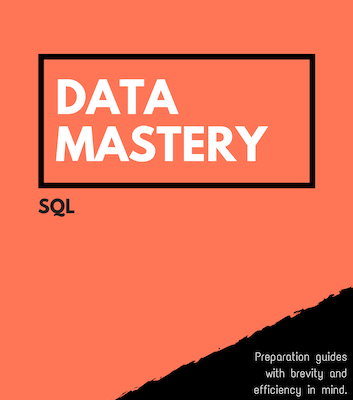Latest news about Bitcoin and all cryptocurrencies. Your daily crypto news habit.
Data Mastery: SQL — Left & Right Outer Join
There are so many exciting projects out there in the Data World. Artificial Intelligence, Machine Learning, Neural Nets, Blockchain, and more are sweeping the technology industry. In order to get to the cutting-edge stuff, first and foremost, data needs to be stored, evaluated, and tested. The best place to do that is SQL (or a library that operates with SQL-like commands, see my article on Python’s Pandas library).
This series Data Mastery: SQL, will teach you the essential subjects. These are not exhaustive tutorials. Instead they are focused preparation guides — with brevity and efficiency in mind. It is meant for:
- Software Engineers who want to analyze their creation’s data
- Product Managers, Marketers, and others who want to be data-driven
- Beginning Data Scientists, Data Engineers, Data Analysts, or Business Intelligence Developers preparing for interviews
See my resource list of the books I used to prepare for my big interview
Each article will contain a brief technical explanation of the subject, an example question, and an answer. Follow up articles will contain challenging questions so you can evaluate your learning.
This series does not come with accompanying data sets. The advantage to this is when you are on the drawing board, whether in an interview or project design, you do not have test data to play with. You have to think abstract.
Left & Right Outer Join
These joins are similar to Inner Joins except for one thing: they return all results that appear in one table and whatever matches up from the other.
Recall our daily_user_score table from earlier in the series:
date | userid | sessionid | score------------------------------------------2018–09–01 | 983489272 | 125 | 1122018–09–01 | 234342423 | 34 | 1122018–09–01 | 567584329 | 207 | 6182018–09–02 | 983489272 | 126 | 4102018–09–02 | 983489272 | 127 | 339
And remember our table user_revenue:
userid | revenue--------------------983489272 | 100234342423 | 33567584329 | 57305852827 | 8867736361 | 29
The best way to understand Outer Joins is to see them in action. Say we want to see for all users how much they paid and their scores on 2018–09–01. This is how we query the database:
SELECT r.userid, r.revenue, d.scoreFROM user_revenue AS rLEFT OUTER JOIN daily_user_score AS dON d.userid = r.useridAND d.date = ‘2018–09–01’;
The results of this query are:
userid | revenue | score---------------------------983489272 | 100 | 112234342423 | 33 | 112567584329 | 57 | 618305852827 | 8 | NULL867736361 | 29 | NULL
Notice that the users who do not have a corresponding record in the daily_user_score table have a NULL value for their score — this is the Outer Join. A LEFT JOIN will include all rows from the table after FROM. A RIGHT JOIN will include all rows from the table after JOIN.
Try it yourself
Write a query that for each row in daily_user_score include the revenue made off that particular user.
Answer
SELECT d.date, d.userid, d.sessionid, d.score, r.revenueFROM user_revenue AS rRIGHT OUTER JOIN daily_user_score AS dON d.userid = r.userid;
OR
SELECT d.date, d.userid, d.sessionid, d.score, r.revenueFROM daily_user_score AS dLEFT OUTER JOIN user_revenue AS rON d.userid = r.userid;
These queries return:
date | userid | sessionid | score | revenue----------------------------------------------------2018–09–01 | 983489272 | 125 | 112 | 1002018–09–01 | 234342423 | 34 | 112 | 332018–09–01 | 567584329 | 207 | 618 | 572018–09–02 | 983489272 | 126 | 410 | 1002018–09–02 | 983489272 | 127 | 339 | 100
Thanks for reading! If you have questions feel free to comment & I will try to get back to you.
Connect with me on Instagram @ljglass
Connect with me on LinkedIn
Check out my essentials list on Amazon
 Search for me using my nametag on Instagram!
Search for me using my nametag on Instagram!
Data Mastery: SQL — Left & Right Outer Join was originally published in Hacker Noon on Medium, where people are continuing the conversation by highlighting and responding to this story.
Disclaimer
The views and opinions expressed in this article are solely those of the authors and do not reflect the views of Bitcoin Insider. Every investment and trading move involves risk - this is especially true for cryptocurrencies given their volatility. We strongly advise our readers to conduct their own research when making a decision.



